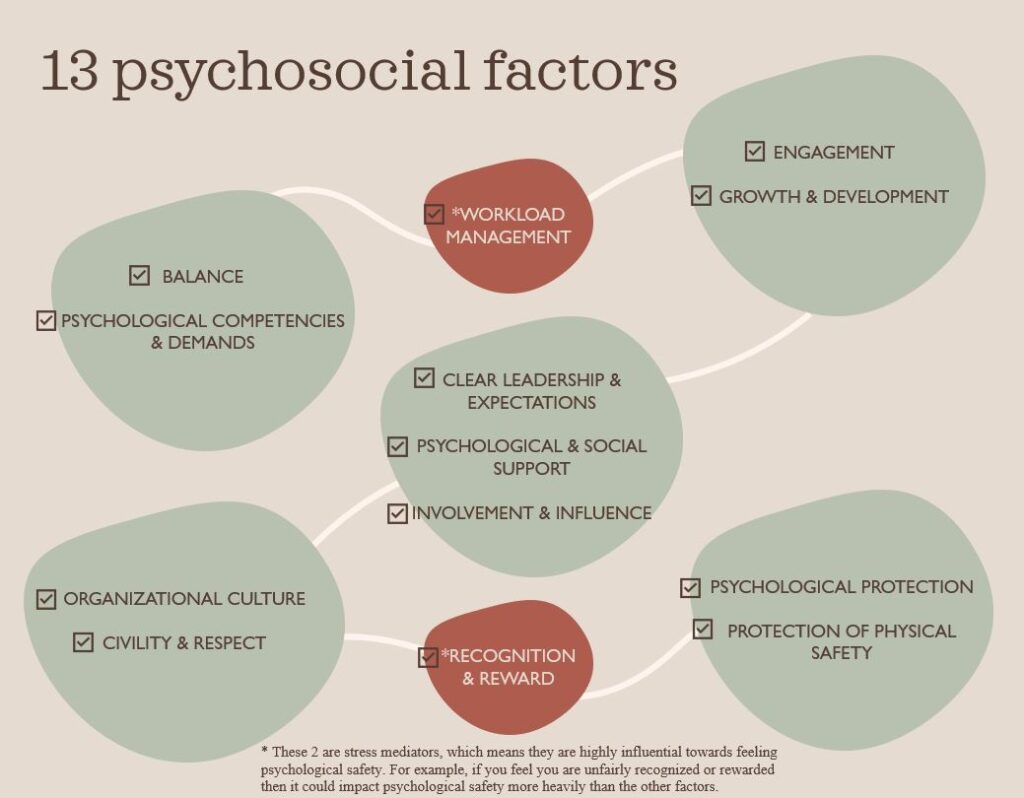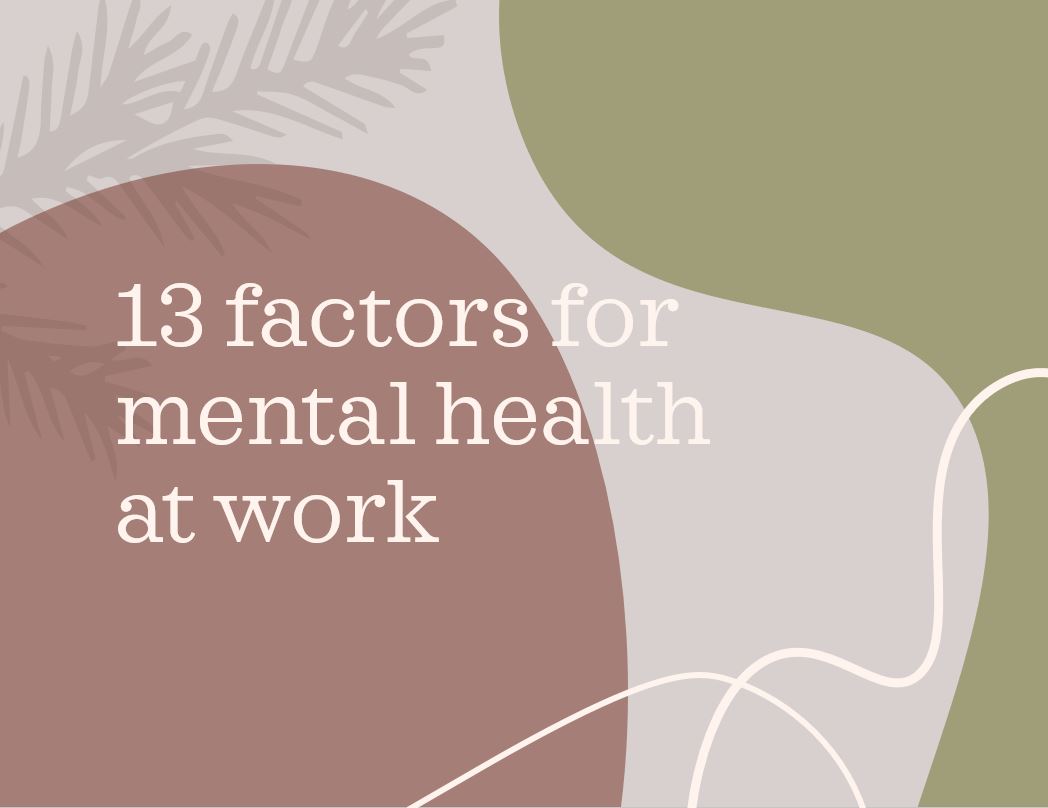Did you know there are 13 different ways to assess if the workplace harms employees psychologically, such as stress, depression, and anxiety?
You likely do not because much of the discussion is happening to HR leaders in the workplace. Workplaces are encouraged to do assessments and take action to prevent negative impacts on employee well-being. The problem is the negative impact, if it exists, is likely caused by workplace practices and leaders endorsed by HR.
How effectively can someone fix a problem they have helped create? Workplace leaders, like HR, likely have a huge blind spot or cannot call out the responsible people in power for various political reasons.
I want to tell employees directly about these 13 factors and how they can use them to assess harm to well-being.

HR will likely never share these factors and how to assess them with employees because it would open up too many issues, such as potential lawsuits or uncomfortable questions. So let’s have a discussion as employees and compassionate leaders.
Topic #1: let’s talk about organizational culture.

The Canadian Centre for Occupational Health and Safety says this:
“Organizational trust is essential for any positive and productive social processes within any workplace.” What happens when it is lacking? “An unhealthy culture creates more stress, which lowers employee well-being. A culture of profit at all costs and constant chaotic urgency can create an environment in which burnout is the norm.”
If you already have a mental illness such as anxiety or depression disorder, a negative culture could be more dangerous for you.
If you are a minority, such as a woman of colour — a negative culture could be more dangerous for you.
As a woman of colour, I’ve taken on too much work – and the workplace was fine with it because they could bill me out at 50 or 60 hours and pay me for 40 of them. Or they wanted that project to be delivered on time and as cost-effectively as possible, so people of colour were leaned on more than others — that also happened.
But one year, I started to feel so much stress from clearly unethical situations (witnessing bullying, being harassed, breaking my word with a client) that it caused depression. These situations went against the company values, yet they happened anyway. As a result, I think I started working with undiagnosed depression and anxiety, which changed the threshold for what I could tolerate in a toxic culture. As I kept working, my threshold continued to lower, and the stress I felt from a culture I distrusted started to become dangerous. It set up a negative cycle I didn’t see until I hit a breaking point that put me in the ER early one morning. I had a wake-up call to take the correlation between work stress and well-being more seriously.
As employees, it is important that we understand the acceptable thresholds of lack of safety to our well-being.
What I do to protect my well-being
Out of that wake-up call, I found meditation and self-compassion practices that restored my mental health and physical health. Even more than that, I understood that, for me, integrity matters. I can be in a negative workplace culture if I stay aligned with my values.
Staying in my own integrity, even if the workplace lacks integrity, is possible.
I find that with simple and consistent meditation practices, I can approach a negative culture and change my mindset enough so my well-being isn’t impacted. I’ve found myself in organizational cultures where bullying, harassment, and outright lies are tolerated. Worse, those doing the harm are recognized as great leaders. It’s sickening – but it’s possible to be in a workplace that is sick without getting sick. This is how I approach it:
- Awareness of the safety hazard is key.
- Mindfulness of emotions and body responses is key.
- Compassion is key – both self-compassion and speaking to a trusted person. I cannot tell you the number of times that I got together with a group of colleagues and opened the conversation about how the culture feels rotten. They tell me what a relief it is to talk about it and realize they are not imagining it.
- Taking conscious action is key – pushing back on unfair demands, calling out lies, or standing up to bullying – or even going to HR, quitting, or taking legal action, depending on the severity of how your well-being is impacted.
What has been your experience with negative culture in the workplace? Do you think it’s different for minority groups?
Organizational Culture is only one of the 13 psychosocial factors that are important for well-being in the workplace.
Our minds deserve safety as a priority, and if the workplace is the source of the harm, it is even more important for employees to become aware and mindful, seek compassion, and take action.
Next time, we’ll explore another psychosocial safety factor because it increases the danger to well-being if more are lacking.
In the meantime, if you’d like coaching on finding peace and harmony in your work and life, reach out for a complimentary discovery call. Or you can read more about how I used these 13 factors to project my well-being in my book, Breakthrough: A Memoir of Toxic Work, Mindfulness, and Inner Peace.
